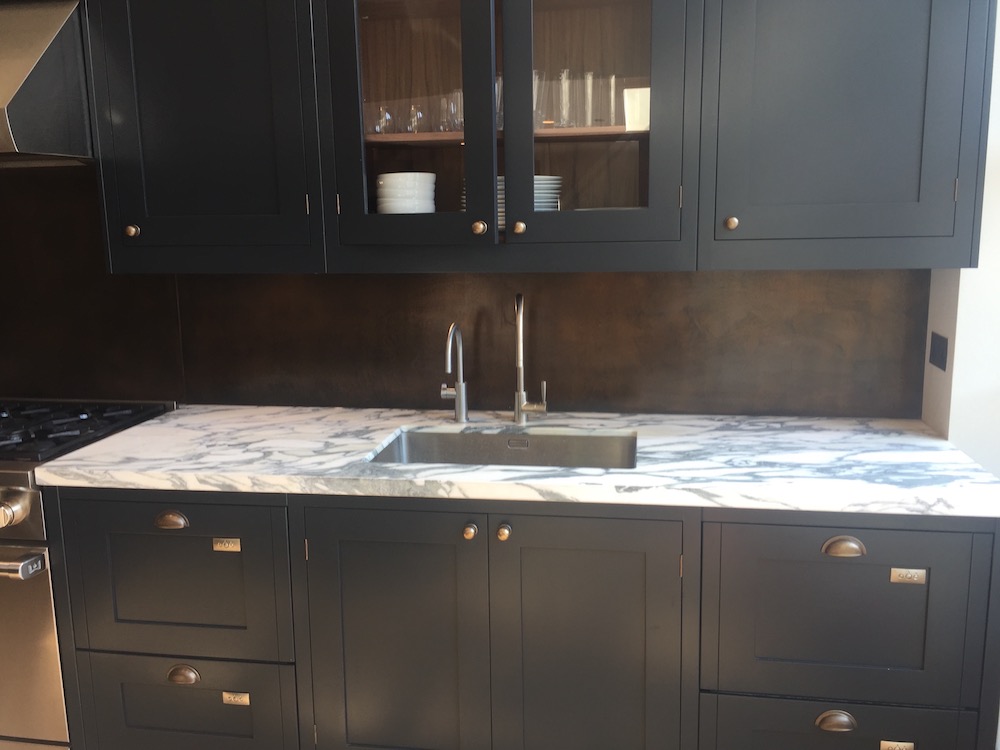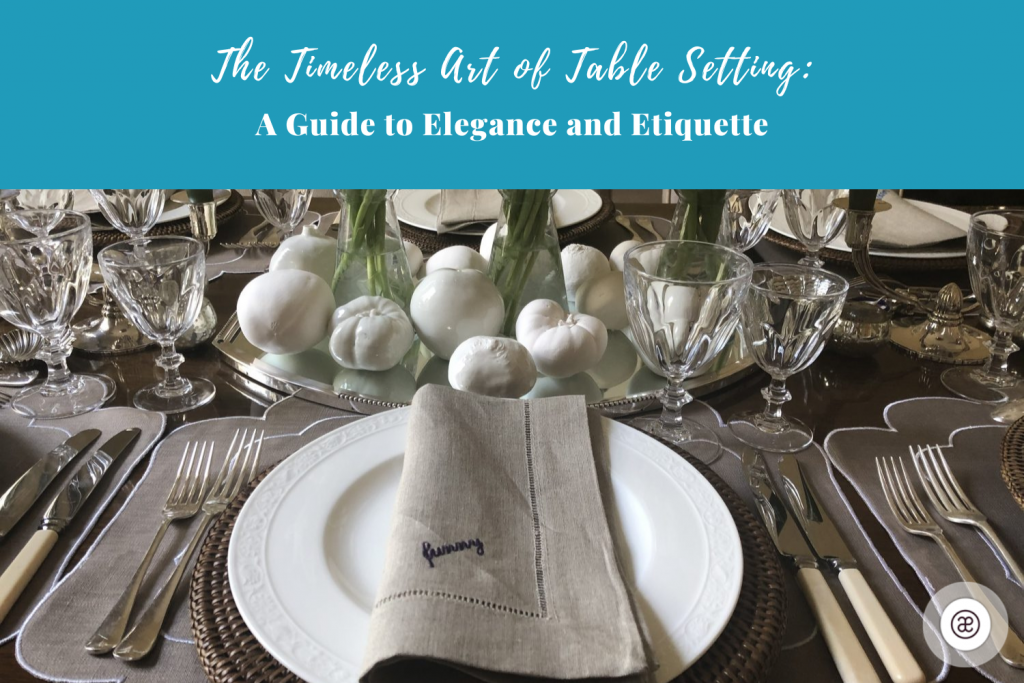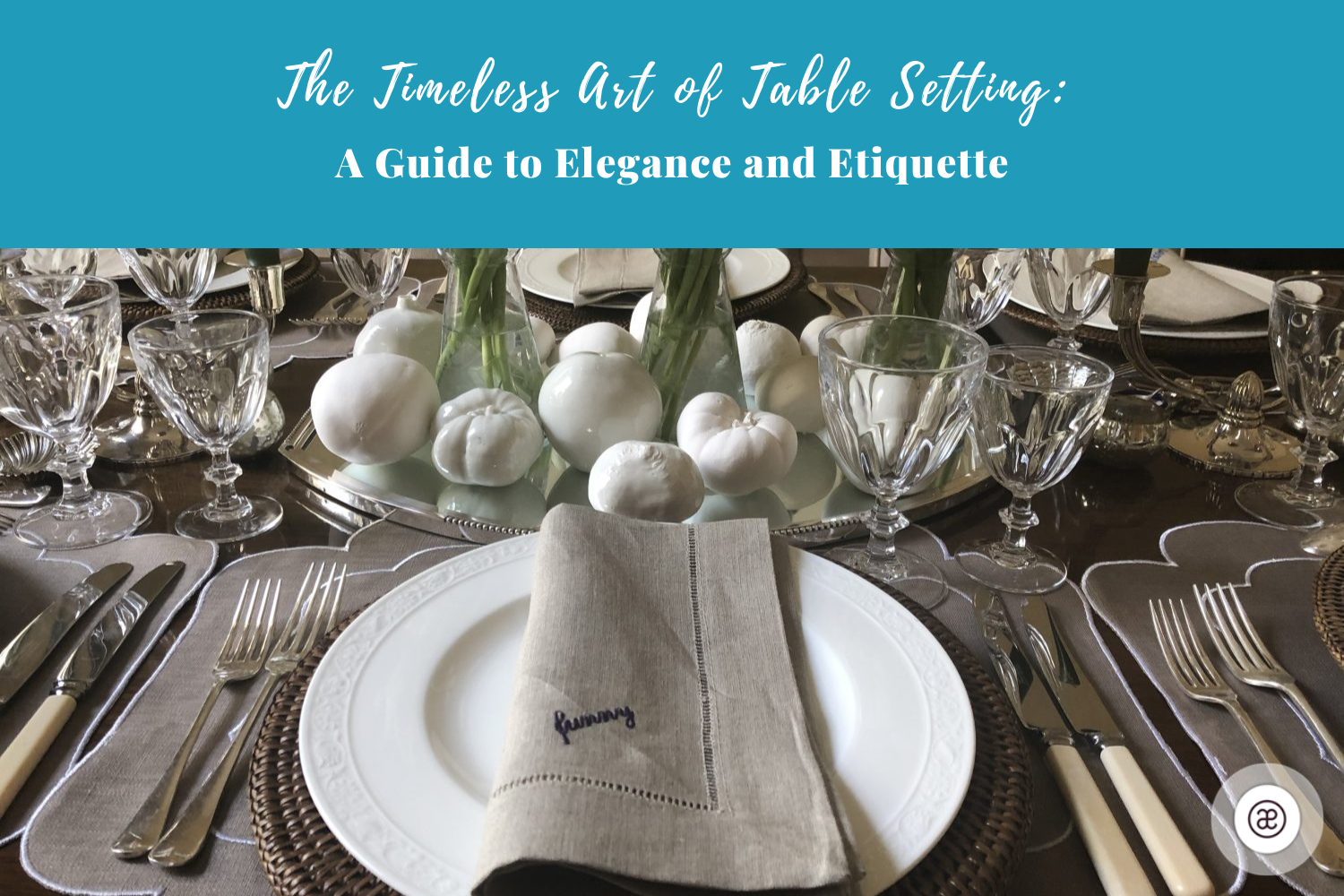
The Timeless Art of Table Setting: A Guide to Elegance and Etiquette
In a world that often prioritises speed over substance, there’s something profoundly satisfying about slowing down to appreciate the finer things in life. One such pleasure is the art of table setting—a tradition steeped in history, etiquette, and a dash of personal flair. In an era where casual dining often reigns supreme, the magic of a meticulously set table, an orchestrated event, and fine dining with friends is a treasure worth preserving.
The act of setting a table is not merely a functional task but a form of art that speaks volumes about the host. It’s a silent yet eloquent expression of hospitality, taste, and attention to detail. Each piece of cutlery, each fold of the napkin, and each placement of a plate tells a story—a story of tradition, culture, and personal style.
And in a world that’s becoming increasingly casual, where fast food and quick meals are becoming the norm, the art of setting a table brings us back to a time where dining was not just about eating but an experience to be savoured.
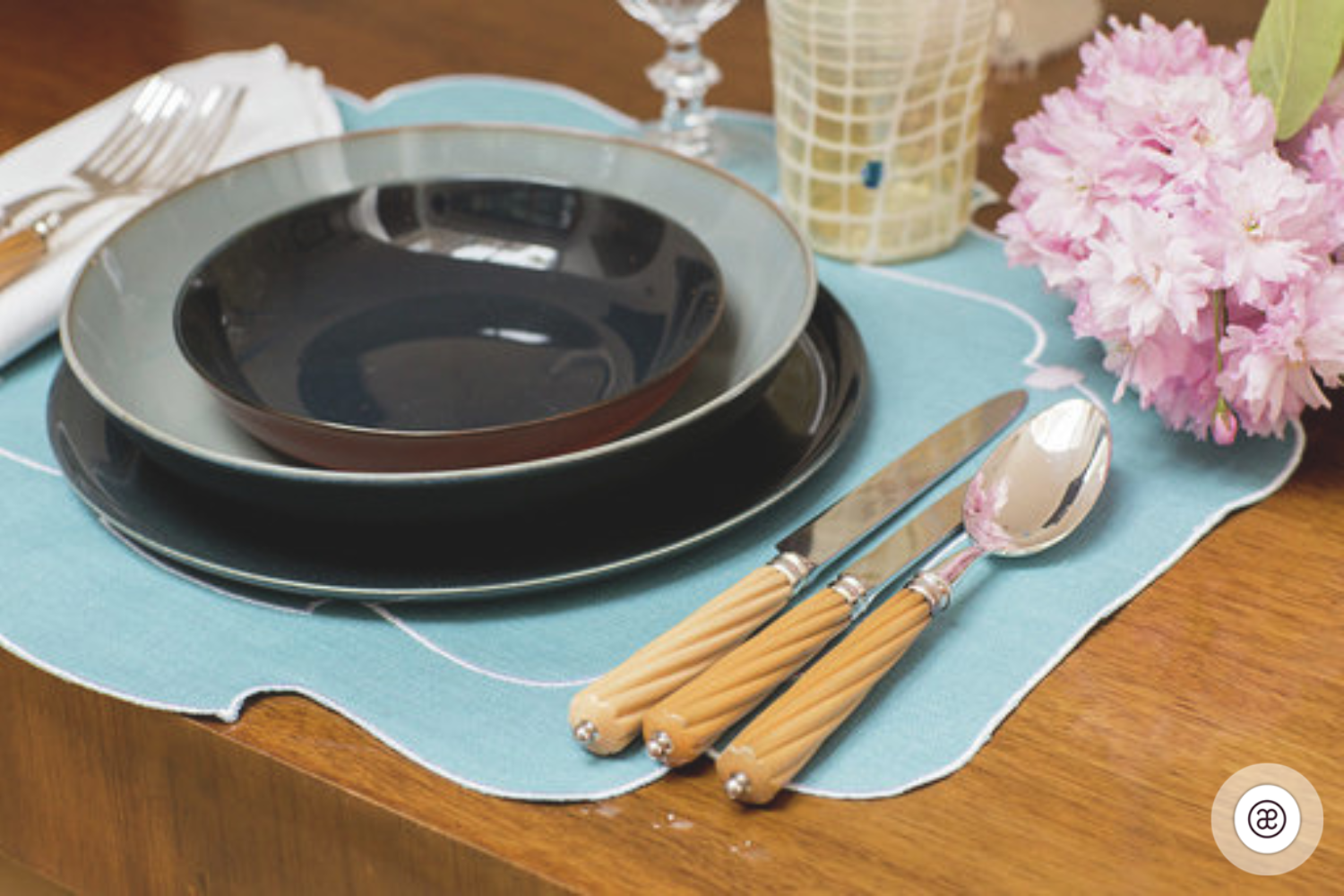
The Traditions and Their Importance
Historical Context
Table setting is far from a modern concept; its roots trace back to medieval times. Manners were considered the outward manifestation of one’s inner worth, leading the elite to establish countless rules documented in courtesy or etiquette books. The Eurpoeans have always been at the forefront of these traditions, setting standards that have been adopted and adapted worldwide.
Relevance Today
While the world has evolved, the essence of these traditions remains unchanged. They serve as a bridge between generations, allowing us to connect with our past while adding our unique touch to the present. In today’s fast-paced society, where meals are often consumed on the go, the act of sitting down to a beautifully set table serves as a reminder of the importance of mindfulness and the joy of shared experiences.
The Joy of Passing Down Traditions
There’s an indescribable joy in passing down these traditions. It’s like gifting a piece of history, a set of values, and a sense of belonging all wrapped into one. The younger generation, often engrossed in digital screens, can greatly benefit from understanding the importance of real-world interactions and the subtleties of social etiquette. Teaching them the art of table setting is not just about instructing them on where the fork and knife go; it’s about imparting life skills that will serve them well in various social settings.
Eager to become an expert at table setting? Grab our detailed Table Etiquette Guide and elevate your next social event to new heights.
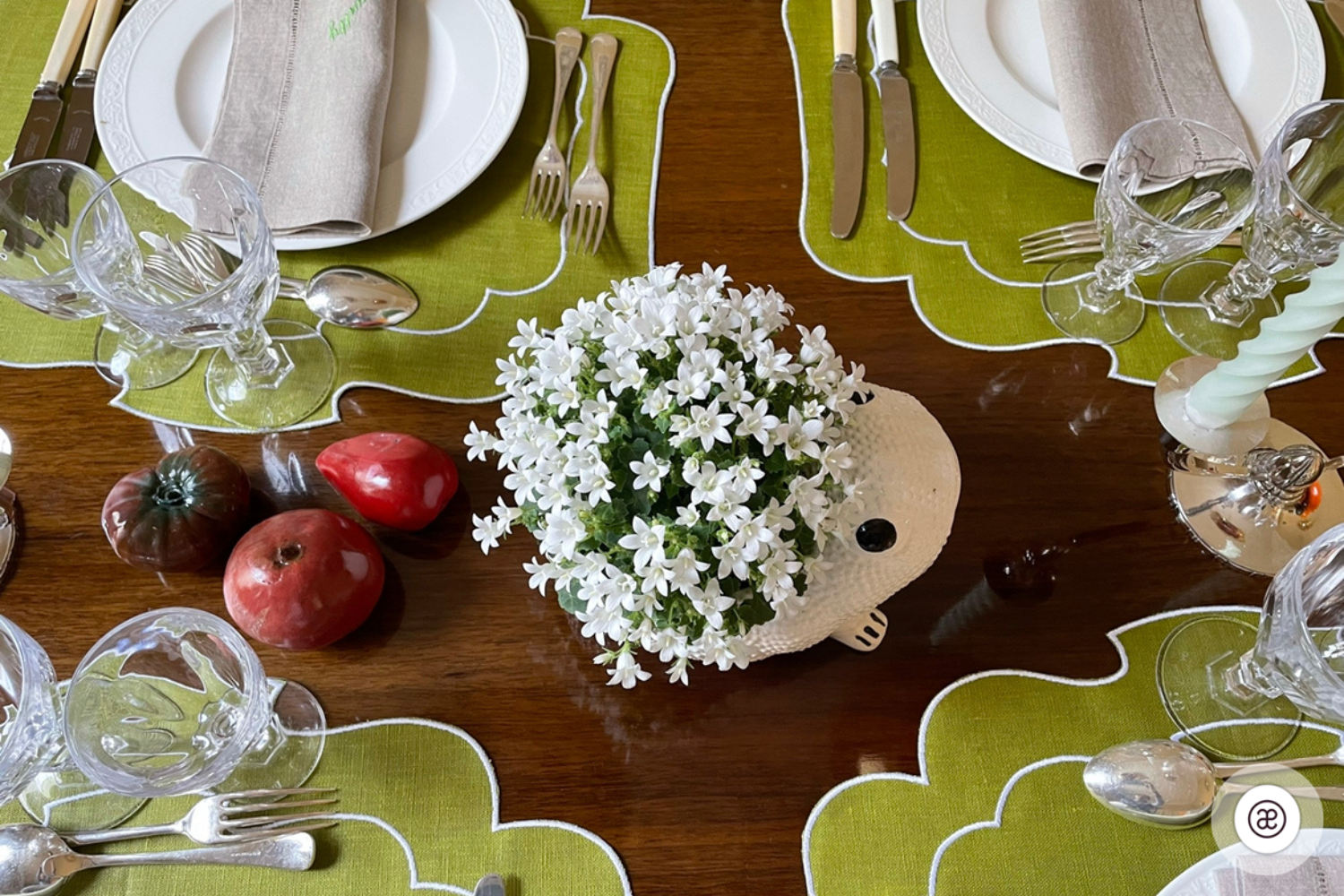
The Layout Specifics
The Essentials
A proper table setting comprises a dining set, cutlery, and glassware. The plate takes centre stage, flanked by forks on the left and knives and spoons on the right. Glassware is strategically placed above the knives, depending on what is being served. The British have a particular fondness for getting these details right, as evidenced by the elaborate settings often seen at formal events and ceremonies
The Role of Each Element
Each element on the table serves a specific purpose. For instance, chargers add a decorative flair, while the arrangement of cutlery indicates the order of courses. In British culture, the use of fine china and silverware is not uncommon, especially during special occasions. These elements not only add aesthetic value but also elevate the dining experience, making it memorable for all involved.
The Importance of Details
Details like napkin folds, centrepieces, and even the type of glassware can elevate the dining experience from ordinary to extraordinary. In Britain, where afternoon tea is a cherished tradition, even the choice of teacups and saucers becomes an important aspect of table setting. The napkin, often overlooked, can be folded in various artistic ways to add a touch of elegance. Similarly, the centrepiece, whether it’s a floral arrangement or a decorative item, becomes the focal point, drawing the eye and sparking conversation.
Want to master the art of table setting? Download our comprehensive Table Etiquette Guide and make your next gathering an unforgettable experience.
The Do’s and Don’ts
Do Not Use Scented Candles
While candles add a romantic touch to any setting, scented candles can interfere with the aroma of the food. In proper dining etiquette, the focus should always be on the culinary delights being served. Therefore, it’s advisable to stick to unscented candles to maintain the integrity of the meal’s aroma.
Do Not Place the Tea or Coffee Cup on the Table
In traditional settings, tea and coffee cups should be presented later after the meal, usually in the drawing room to avoid clutter and to signify the transition from dining to relaxation. This practice also allows for a more formal presentation of the dessert course, often accompanied by a separate set of cutlery.
Do Not Stack Dishes When Clearing
Stacking dishes can be seen as a sign of haste and can disrupt the dining experience. In line with proper etiquette, dishes should be cleared one at a time, maintaining the table’s aesthetic integrity throughout the meal.
Serve from the Left, Clear from the Right
This rule ensures a seamless flow of service, minimising disruption for the diners. It’s a practice that has been followed in households and fine dining establishments for generations, contributing to the overall elegance of the dining experience.
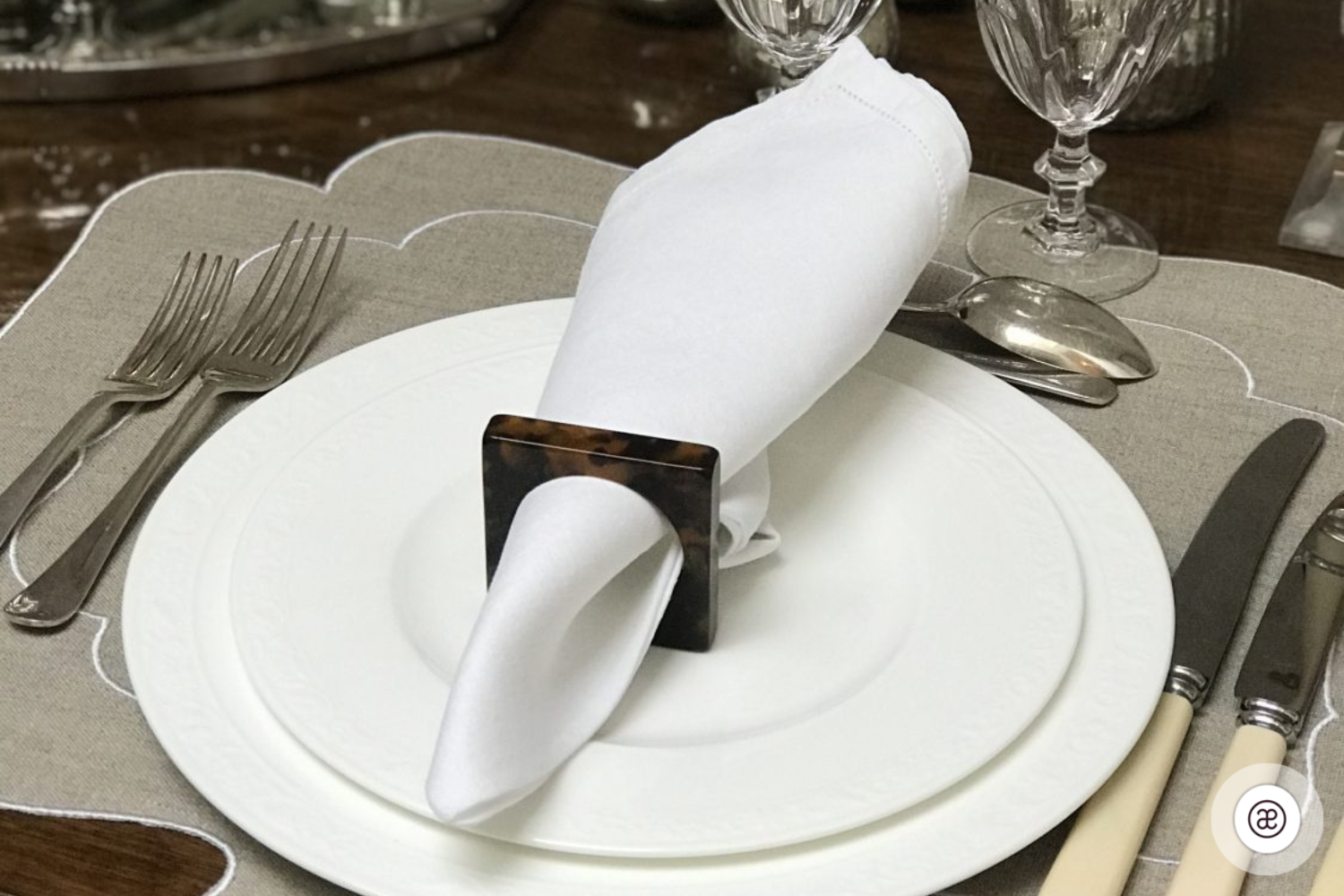
Personalisation: Let Your Personality Shine
While traditions provide the foundational guidelines for setting a table, there’s ample room for personalisation. After all, each dining experience is unique, and your table should reflect that. In Britain, where traditions are deeply revered, adding a personal touch to your table setting is not just accepted but encouraged.
Choice of Items
The items you choose to place on your table can say a lot about you. Whether it’s a set of vintage plates passed down through generations or modern, minimalist cutlery, each item adds a layer of personality to the table.
Colour Scheme
The colour scheme you choose can set the mood for the entire meal. While traditional British settings often lean towards more neutral or muted tones, don’t be afraid to experiment with vibrant colours if that’s more your style. The key is to maintain a harmonious balance so that no single element overshadows the others.
Cutlery and Plates
The choice of cutlery and plates is another avenue for personal expression. In Britain, silverware is often the go-to choice for formal settings, but materials like bamboo or even gold-plated cutlery have found their way into more adventurous table settings.
The Final Touch
Remember, the ultimate goal is to create an inviting atmosphere where guests feel comfortable and appreciated. Whether it’s a hand-written place card, a unique napkin fold, or a quirky centrepiece, these final touches are where your personality can truly shine.
Looking to add a touch of elegance to your dining experience? Get your hands on our Table Etiquette Guide and transform your next gathering into a memorable affair.
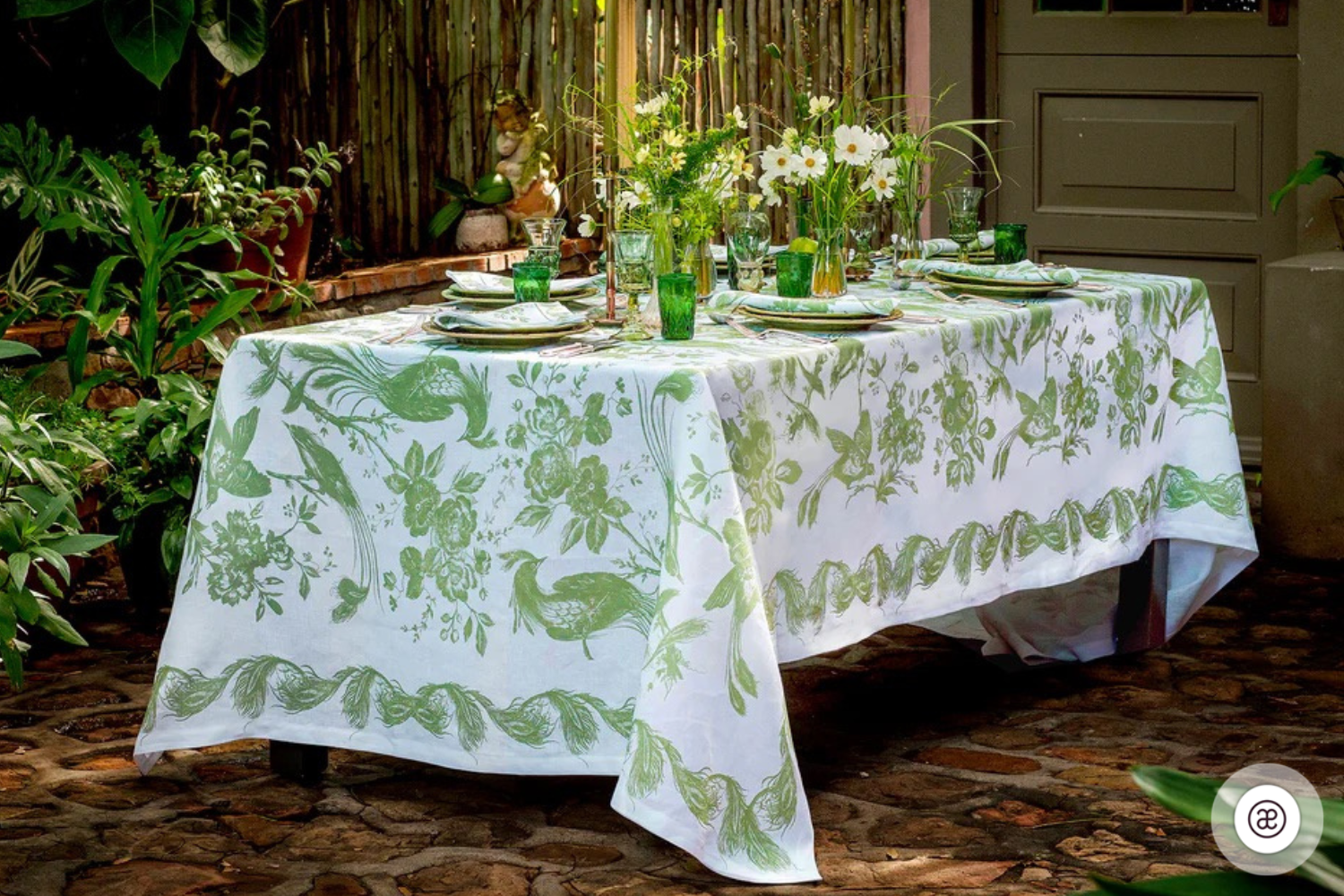
The Art of the Table, A Symphony of Tradition and Individuality
In conclusion, the art of table setting is a rich tapestry woven from threads of tradition, etiquette, and personal flair. It’s a practice that transcends mere functionality, elevating the dining experience into a meaningful ritual. From the historical roots that have shaped dining etiquette to the modern adaptations that allow for personal expression, each element on the table serves a purpose and tells a story. As we navigate a world that increasingly leans towards the casual, let us not forget the beauty and significance of a well-set table. It’s not just a stage for meals but a platform for memories, a testament to the host’s care and a symbol of the joy of shared experiences.
Why not elevate your own dining experience? Shop our amazing range of tableware at Almost Essential, where you’ll find everything from personalised linen and unique crockery to gorgeous glasses. Make your table a work of art and a conversation starter at your next gathering. Don’t forget to download our table etiquette guide here.

